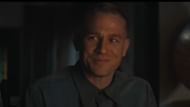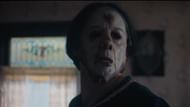Monster: The Ed Gein Story is the third season of the Netflix anthology series Monster, created by Ian Brennan. It stars Charlie Hunnam as Ed Gein and explores his life and crimes, along with society’s obsession with true crime and his influence on films like Psycho and The Texas Chain Saw Massacre.
This season follows Dahmer – Monster: The Jeffrey Dahmer Story and Monsters: The Lyle and Erik Menendez Story, and is the first in the series not created by Ryan Murphy.
Monster: The Ed Gein Story takes creative liberties with the real-life crimes of Ed Gein, reimagining aspects of his story for dramatic effect. Some changes include an expanded focus on Gein’s influence on pop culture and fictionalized interactions with key characters, adding layers not present in historical accounts.
Here is a list of seven changes Monster: The Ed Gein Story makes from the real-life killer’s story.
Disclaimer: The following list is ranked in no particular order, and the opinions expressed belong solely to the author.
7 changes Monster: The Ed Gein Story makes from the real life killer’s story
1) Robert Bloch was no authority on Ed Gein

Although Monster: The Ed Gein Story takes wild liberties with its portrayal of Adeline Watkins, she isn’t the only person the series misrepresents.
The show also turns horror novelist Robert Bloch, the man behind Psycho, into an armchair expert on Gein’s psychology, having him analyze how the killer’s upbringing shaped his mind.
In reality, Bloch had little to no interest in studying Gein beyond the basic facts. He openly admitted that his inspiration for Psycho came only after hearing about Gein’s crimes and being intrigued by the idea that a murderer could live unnoticed in a quiet Midwestern town.
Aside from that general premise, a normal-looking man hiding monstrous impulses, Bloch never pretended to understand Gein’s psyche. In fact, he later clarified that Psycho was never meant to be based on Ed Gein at all.
2) Ed Gein never assisted in Ted Bundy’s capture

While it is true that Ed Gein loosely inspired Psycho and later influenced horror classics like The Texas Chain Saw Massacre and The Silence of the Lambs, the show takes this connection far beyond reality.
Robert Bloch’s exaggerated familiarity with Gein at least stems from a faint truth. The same can’t be said for the show’s final episode.
Monster: The Ed Gein Story ends with a completely fabricated twist, depicting Gein aiding law enforcement in tracking down Ted Bundy. In reality, Gein had no involvement with the FBI, nor was he ever questioned by the Behavioral Science Unit.
Although psychologists studied his case in an attempt to understand his behavior, their findings were speculative at best, and Gein certainly never played any role in solving future crimes.
3) Season 3 revives a long-standing Ed Gein myth

One of the most sensationalized aspects of Ed Gein’s story has always been the gruesome details surrounding his use of human remains. Though he was only confirmed to have murdered two people, Gein also dug up several graves and used body parts to create disturbing artifacts like clothing, masks, and furniture.
To its credit, Monster: The Ed Gein Story accurately captures the eerie state of Gein’s house. Yet, much like the exaggerated claims that linked him too closely to Psycho, many of the darker rumors about what he did with the corpses have grown beyond the truth.
Gein consistently denied having any sexual contact with the bodies he unearthed, though speculation about it has persisted for decades. The show’s graphic portrayal of this idea is pure fabrication, another instance of myth overshadowing fact.
4) Ed Gein was not engaged to Adeline Watkins

Charlie Hunnam’s unusual portrayal of Ed Gein in Monster: The Ed Gein Story quickly signals just how far the series drifts from historical truth. Whether due to the gaps in the original investigation or the distance of time compared to more recent cases like Dahmer’s, season 3 takes major creative liberties with Gein’s life and relationships.
Much of the show’s misinformation stems from sensationalized accounts in older books about Gein, many of which were already filled with questionable claims. Among the most misleading of these is the idea that Gein was once engaged to Adeline Watkins.
In reality, Gein and Watkins went on a few dates, but she turned down his proposal. She later acknowledged that they both shared an interest in crime stories, but there’s no evidence that their connection went beyond mild curiosity.
The show’s version, depicting Watkins as Gein’s lover, confidante, and accomplice, is entirely fictional. In truth, their brief acquaintance bore no resemblance to the twisted partnership shown on screen.
5) Ed Gein’s mother was misrepresented in Monster season 3

One of the biggest inaccuracies in Monster: The Ed Gein Story is how it portrays Gein’s mother. Like many stories inspired by his crimes, the series repeats the myth of the cruel, controlling mother who drives her son to madness.
Laurie Metcalf’s Augusta Gein is shown as a violent religious zealot who torments her husband and emotionally ruins Ed. In truth, Gein described his father as the abusive one, while his mother, though strict and judgmental, was not physically violent.
The show exaggerates her behavior and ignores the real trauma Gein experienced from his father’s abuse, reinforcing a false version of his family life.
6) Ed Gein did not kill his brother, Henry

While rumors have circulated that Ed Gein might have been responsible for his brother Henry’s death, there is no evidence to support this claim. Monster: The Ed Gein Story takes significant creative license by suggesting otherwise.
In reality, Henry Gein died under uncertain circumstances, likely from smoke inhalation or a heart attack. Although some reports noted head bruises that fueled speculation, Ed Gein was never officially linked to his brother’s death.
Over time, this unproven theory became part of the sensationalized lore surrounding the notorious Wisconsin killer.
7) Ed Gein’s Iinterest in Christine Jorgensen is overstated

While Monster: The Ed Gein Story avoids some of the transphobic clichés often attached to Gein’s story, its portrayal of his interest in gender issues is misleading. Gein did collect articles on what were then called “sex change operations” and showed some curiosity about the subject.
The series exaggerates this by suggesting he was particularly fascinated with Christine Jorgensen. In reality, he had no interest in her, and the book Watkins gives him in the show was published after Gein was already in prison.
This fictional connection only reinforces the misleading idea that Gein’s crimes were tied to gender identity.
Interested viewers can watch Monster: The Ed Gein Story on Netflix.
